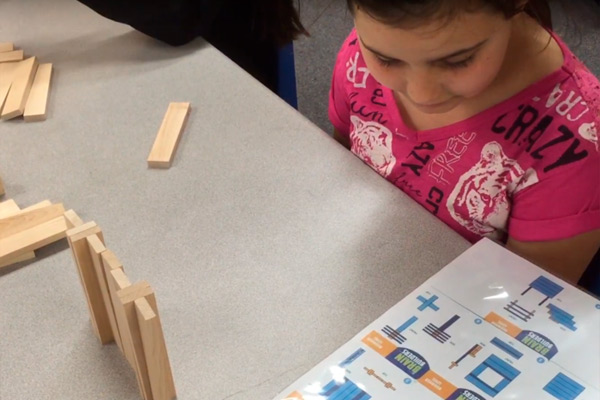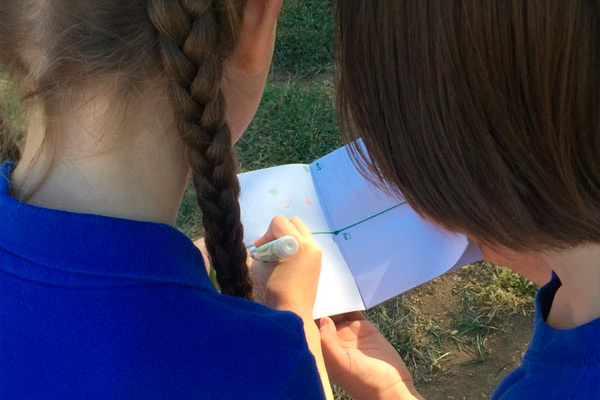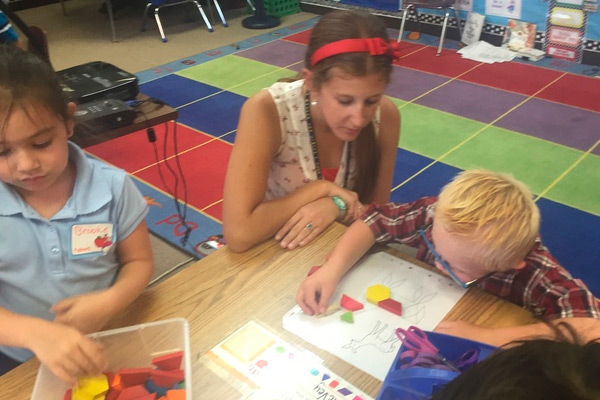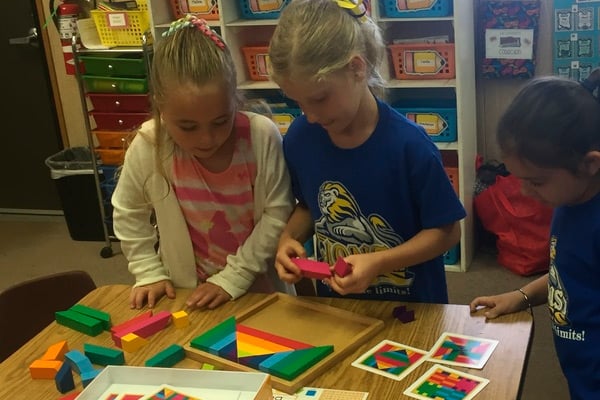University of Redlands Emergency Alert System
Alert Received: . For more information, visit: https://www.redlands.edu/alert/
University of Redlands
- Home
- Spatial STEM+C
- Results
- Qualitative Results
Qualitative feedback from teachers indicated that the spatial activities increased students’ interest and engagement with spatial thinking, as well as the children’s confidence and persistence in solving problems.
The teacher's feedback focused on how the activities made visualization of abstract mental processes concrete, helped students learn their position in space, provided opportunities for academic success, and promoted student interest and engagement. Quotes from participating experimental classroom teachers are provided, below, to illustrate these observations.
It's really hard to visualize flipping things and turning things and it being the same, but with the Pentominoes they can physically do it…The kids were really able to identify it because they each had a letter name, and so the kiddos [would] very easily go, “Oh, I need the N, I found the N.”… I think being able to physically pick something up and flip it and put it together and make it work is a lot easier than looking at a picture and trying to rotate it of a map or something like that. So something that's, like, 3D, that they can pick and move with, and they could see how it can fit together.

I think any of the mapping that we did was beneficial just because they’re still learning where they are in relationship to the world, and so realizing, physically, “I'm here.”

What I find beneficial about having kids do STEM is the fact that generally you know you have a kid that's smart in reading, you have a kid that's smart in writing. Oftentimes, I notice that the kids that are very, like, spatial, that think spatially, sometimes they might be that kid that's not the highest reader in the class, and it kind of gives them a chance to shine and builds their confidence. They get a little more confidence because they're able to do something that that kid that can read really, really well can’t do, and then they can help them solve that puzzle. And that's what I really enjoy seeing in my class.

They don’t even think of it as learning—it’s just more engaging and playing. I mean they’re learning so much through the activities, but to them it’s just, “Wow! This is the fun time in school.” And the excitement level is huge with the kiddos.
